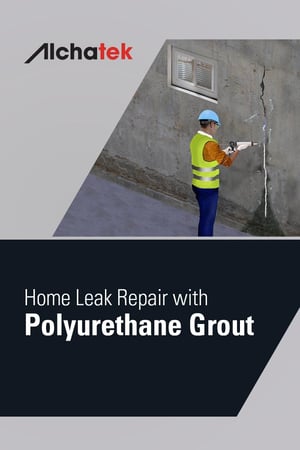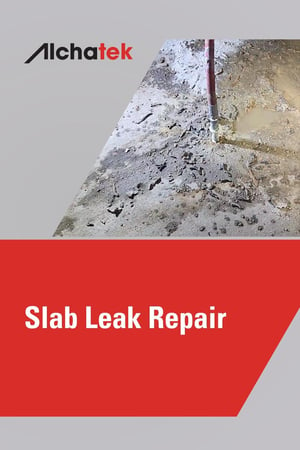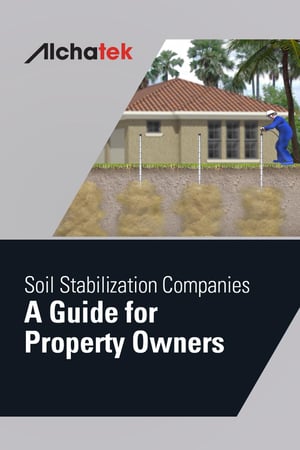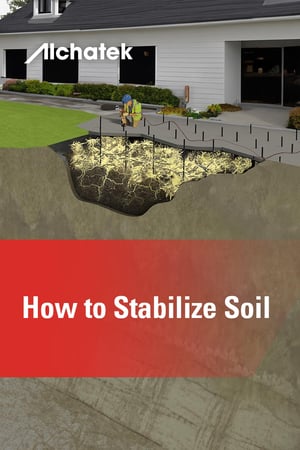
 Uneven concrete slabs are a common problem for homeowners. Level concrete slabs are ideal. Not only do sunken slabs look unsightly, but they can also pose safety hazards. However, there's no need to worry. In this post, we'll explore why slabs sink and how polyurethane foam can effectively level them.
Uneven concrete slabs are a common problem for homeowners. Level concrete slabs are ideal. Not only do sunken slabs look unsightly, but they can also pose safety hazards. However, there's no need to worry. In this post, we'll explore why slabs sink and how polyurethane foam can effectively level them.
Why Do Concrete Slabs Sink?
Concrete slabs can sink for various reasons. Firstly, erosion from poor drainage or leaking pipes can cause issues. Secondly, poorly compacted soil during construction may lead to settling. Lastly, the decay of organic materials under the slab can create voids.
Over time, these issues create gaps or destabilize the soil beneath the concrete. Consequently, slabs settle unevenly.
Level Concrete Slabs with Polyurethane
Polyurethane concrete leveling, also known as slab lifting or slab jacking, offers an effective way to raise and stabilize sunken slabs. The process involves drilling small holes into the slab and injecting expanding polyurethane foam underneath. As the foam expands, it fills voids, compacts the soil, and lifts the slab back into place.
Polyurethane foam has several advantages over other methods like mudjacking. Firstly, it's a minimally invasive process. Secondly, it has a quick curing time, allowing the slab to be usable within 15 minutes. Additionally, it's a lightweight yet durable material. Moreover, it's eco-friendly. Lastly, it's more affordable than total slab replacement in most cases.
A Jack Attack System is sometimes necessary in addition to polyurethane foam. This triangular steel frame helps the technician adjust the slab's position. Often, a measuring device called a dial indicator is used to track the exact level of the slab.
Common Areas for Concrete Slab Leveling
Sunken slabs can affect various areas of your property:
- Garage Floor Slabs: Uneven garage floors can make parking and walking difficult.
- Basement Floor Slabs: Settling basement floors can lead to water pooling and moisture issues.
- Patio Slabs: Sunken patio slabs can ruin the aesthetic and functionality of your outdoor living space.
- Walkway Slabs: Uneven walkway slabs pose tripping hazards for you and your guests.
- Driveway Slabs: Sunken driveway slabs can damage vehicles and make snow removal challenging.
- Pool Deck Slabs: Settling pool deck slabs can be dangerous and unattractive.
- Porch Slabs: Uneven porch slabs can detract from your home's curb appeal.
In most cases, polyurethane foam injection works well for residential concrete lifting needs.
Level Concrete Slabs: Next Steps for Homeowners
If you're dealing with sunken concrete slabs, don't let them diminish your home's safety, value, and appearance any longer. Instead, consult a professional contractor experienced in polyurethane foam lifting to assess your specific situation and determine the best solution for your property. With the right approach, you can enjoy safe, attractive, and level concrete surfaces once again.
Fill out this form or call 404-618-0438 for a contractor referral today!



 When it comes to fixing sunken or uneven concrete slabs, homeowners have two main options: slab jacking with polyurethane and mudjacking (lifting with cement slurry). Both methods aim to level the slab without demolishing or replacing it. However, they differ in their approach and effectiveness.
When it comes to fixing sunken or uneven concrete slabs, homeowners have two main options: slab jacking with polyurethane and mudjacking (lifting with cement slurry). Both methods aim to level the slab without demolishing or replacing it. However, they differ in their approach and effectiveness.
 Unstable ground conditions can cause significant damage to structures built on sandy soils. However, sand stabilization with permeation grouting offers a solution to this problem by stabilizing loose sandy soils to create a solid base. This article explains the stabilization process.
Unstable ground conditions can cause significant damage to structures built on sandy soils. However, sand stabilization with permeation grouting offers a solution to this problem by stabilizing loose sandy soils to create a solid base. This article explains the stabilization process.

 Sunken concrete slabs plague many property owners. Over time, erosion, shifting soil, compaction, and other factors lead to concrete settlement. As a result, neglecting this issue can cause structural damage, vehicle damage, trip hazards, and other liability risks. However, contractors skilled in leveling concrete with foam offer an efficient and effective solution.
Sunken concrete slabs plague many property owners. Over time, erosion, shifting soil, compaction, and other factors lead to concrete settlement. As a result, neglecting this issue can cause structural damage, vehicle damage, trip hazards, and other liability risks. However, contractors skilled in leveling concrete with foam offer an efficient and effective solution.
 If you're a homeowner dealing with concrete leaks in your basement or below-grade living spaces, it's essential to hire an expert who specializes in polyurethane leak seal grouts. These advanced products offer a cost-effective, durable solution for waterproofing your home. Moreover, a skilled contractor will ensure that your home leak repair job is done right.
If you're a homeowner dealing with concrete leaks in your basement or below-grade living spaces, it's essential to hire an expert who specializes in polyurethane leak seal grouts. These advanced products offer a cost-effective, durable solution for waterproofing your home. Moreover, a skilled contractor will ensure that your home leak repair job is done right.

 As a homeowner, discovering a leak in your concrete slab can be a stressful and frustrating experience. Left untreated, slab leaks can lead to sinking concrete and structural issues. Fortunately, there is a highly effective solution: slab leak repair with curtain grouting.
As a homeowner, discovering a leak in your concrete slab can be a stressful and frustrating experience. Left untreated, slab leaks can lead to sinking concrete and structural issues. Fortunately, there is a highly effective solution: slab leak repair with curtain grouting.

 If you're searching for a soil stabilization company, you've probably noticed signs of unstable soil around your property, such as cracks or sinking in your patios, walkways, or pool decks. Unstable soil can lead to serious structural issues, but the right soil stabilization contractor can provide a lasting solution. Understanding the soil remediation process is an essential prerequisite for accurately evaluating soil stabilization companies.
If you're searching for a soil stabilization company, you've probably noticed signs of unstable soil around your property, such as cracks or sinking in your patios, walkways, or pool decks. Unstable soil can lead to serious structural issues, but the right soil stabilization contractor can provide a lasting solution. Understanding the soil remediation process is an essential prerequisite for accurately evaluating soil stabilization companies. 

 If you've noticed that your driveways, patios, or sidewalks have sunken slabs, it's time to consider a reliable solution: foam concrete lifting. This innovative technique involves pumping a lightweight, yet strong, material beneath the slab to level it out. This article explores the benefits of foam concrete lifting and why it's a great option for homeowners.
If you've noticed that your driveways, patios, or sidewalks have sunken slabs, it's time to consider a reliable solution: foam concrete lifting. This innovative technique involves pumping a lightweight, yet strong, material beneath the slab to level it out. This article explores the benefits of foam concrete lifting and why it's a great option for homeowners.
 If you've noticed cracks or sinking in your patios, walkways, pool decks, or other slabs, the problem may lie beneath the surface. In fact, unstable soil around your home can lead to serious structural issues. But don't panic - there is a lasting solution. Keep reading to learn more about how to stabilize soil.
If you've noticed cracks or sinking in your patios, walkways, pool decks, or other slabs, the problem may lie beneath the surface. In fact, unstable soil around your home can lead to serious structural issues. But don't panic - there is a lasting solution. Keep reading to learn more about how to stabilize soil.
 As a homeowner, you've probably seen sunken or uneven concrete slabs around your property. Not only are they unsightly, but they can also be dangerous trip hazards. Moreover, this problem can affect many areas, including:
As a homeowner, you've probably seen sunken or uneven concrete slabs around your property. Not only are they unsightly, but they can also be dangerous trip hazards. Moreover, this problem can affect many areas, including: